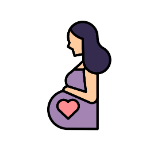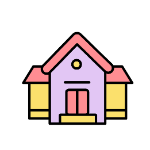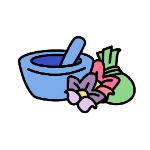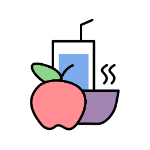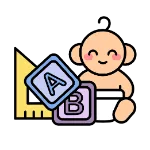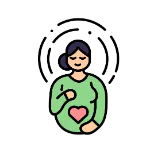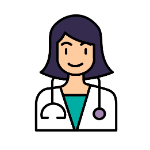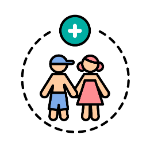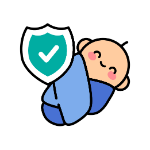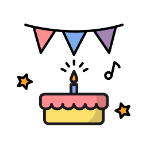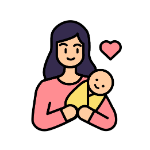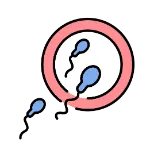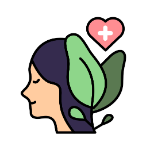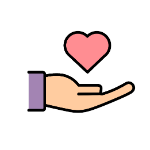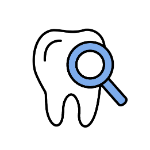
Parenting
First Aid For Children: What You Need To Know
8 min read | Updated on 27-04-2023 by HappyPreggie
First Aid is the immediate action of taking steps to keep a baby or toddler who is injured, involved in an accident or in a medical emergency alive before professional help arrives.

Knowing what to do when a child is in distress or emergency is always crucial. If it’s an emergency situation that you cannot handle, please call 999 and instantly ask for an ambulance.
#1 When To Use First Aid

Here’s when you need to use first aid:
#2 Basic Life Support Steps

Equip yourself with the basic life support steps that can be easily remembered such as DRSABCD;
#3 CPR Guidance
CPR for Children (Between 1-year-old to 8 years old)

CPR for an Infant (1-year-old and below)

#4 Checklists
Baby-proofing Checklist

First Aid Checklist - for babies and children up to 8 years old

First aid in general means assisting someone who has been injured, has been in an accident or needs medical emergency as soon as possible. The goal of first aid, whether it is for a baby, a kid, or an adult, is to keep someone alive, protect them from future harm, and do everything you can to help them stay conscious. It is a vital life skill for parents to take note of and to become more risk aware when keeping their little ones safe during an emergency. From the moment your child takes their first steps, they are already bound to many accidents and danger. While you may not always be able to protect them from harm, you can always be prepared.
Want to read more? Check out what your baby crying pattern means and also how you can treat your child's wounds and injuries.
(Image credits to MedicalNewsToday)
Knowing what to do when a child is in distress or emergency is always crucial. If it’s an emergency situation that you cannot handle, please call 999 and instantly ask for an ambulance.
#1 When To Use First Aid
(Image credits to Brunet)
Here’s when you need to use first aid:
- Simple injuries like a cut on the finger
- Serious problems like broken arms
- Unconsciousness
- Life-threatening situations like asthma attacks
- Falls like tripping or falling from higher grounds
- Burns caused by hot water, fire or exposure to the sun
- Poisoning due to consuming, inhaling or contacting harmful substances
- Drowning
#2 Basic Life Support Steps
(Image credits to Freepik)
Equip yourself with the basic life support steps that can be easily remembered such as DRSABCD;
- Danger: Ensure you and others are safe
- Response: If there’s any response from the injured, monitor and make sure that they do not feel any discomfort
- Send for help: Call 999 or any emergency services for help
- Airway: Check the child‘s or baby’s mouth for anything blocking the airway
- Breathing: Look, listen and feel for signs of breathing. If nothing happens, start doing CPR immediately
- Cardiopulmonary resuscitation (CPR): 30 chest compressions & 2 breaths
- Defibrillation: Use a defibrillator if you have one with you
#3 CPR Guidance
CPR for Children (Between 1-year-old to 8 years old)
(Image credits to Heart)
- Begin with chest compressions
- Put the heel of 1 hand between the nipples on the lower half of the breastbone (use 2 hands for older children)
- Push/ compress the chest firmly 30 times
- Make sure the compress goes 2 inches deep
- Give 100 compressions per minute
- Let the chest return to normal position after each compression
- Open Airway
- After 30 compresses, open the airway with a head tilt-chin lift
- Check the mouth for any foreign objects
- Use finger sweeping to take out the objects
- Start rescue breathing
- Inhale normally
- Pinch the child’s nose shut
- Cover the child’s mouth with yours
- Blow into their mouth twice (blow for 1 second each)
- The chest must rise for each breath
- Resume chest compressions
- Continue with 30 compressions per 2 breaths
- Repeat the cycle 5 times for around 2 minutes
CPR for an Infant (1-year-old and below)
(Image credits to EMCCPR)
- Begin with chest compressions
- Place 2 fingers right below the nipple line
- Push straight down
- Give 30 compressions
- 1.5 inches deep with 100 compressions per minute
- Allow the chest to rise back after every compression
- Open airway
- After 30 compressions, open the airway with a head tilt-chin lift
- Check the mouth for any signs of foreign objects
- Use finger sweeping to take out the objects
- Start rescue breathing
- Inhale normally
- Cover baby’s mouth and nose with your mouth
- Blow in the air twice for 1 second each
- The chest must rise for each breath
- Resume chest compressions
- Continue with 30 compressions to 2 breath
- Continue with 5 cycles of compressions and breaths (2 mins)
#4 Checklists
Baby-proofing Checklist
(Image credits to ShopbackSG)
- Avoid giving aspirin to a child that is experiencing fever
- Do not move a child who may have a serious head, neck, or back injury
- Get help from the closest people around
- Ensure the surrounding is safe for you and your child
- Situate injured child appropriately
- Always bring the child to the paediatrician for any serious injuries
- Never place hot drinks or food near your baby or at the edge of a table
- Keep children indoors at dawn and dusk
- Keep bathroom doors secured at all times
- Look out for any sharp or heavy objects around the house
- Be cautious when using electricity
- Install gates around stairs area
- Place cleaning and laundry products in high cabinets
- Make sure baby is in a safe spot while you are busy
- Replace electrical appliances and cords if they are worn out
- Keep working tools in a locked cupboard away from baby
- Put paddings on furniture with sharp corners using foam or corner protectors
- Use non-slippery mats as rugs
- Avoid using blinds with long cords that tangle easily
- Use a thick carpet or rug in the living area for better cushioning from falls
First Aid Checklist - for babies and children up to 8 years old
(Image credits to EMedicineHealth)
- Antibacterial ointment
- Anti-itch cream (Hydrocortisone cream)
- Alcohol wipes
- Bandages
- Band-aids
- Adhesive tape
- Gauze pads
- Hand sanitiser
- Calamine lotion
- Rehydration salts/Activated charcoal (For diarrhea)
- Cold pack
- Blunt scissors
- Tweezers
- Thermometer
- Disposable gloves
- Cotton balls
- Baby brush
- Medicine dropper
- Bulb syringe
- Petroleum jelly (Vaseline)
- Saline spray
- Benadryl (For allergies)
- Antibiotic cream
- Baby nail clippers
- Mild liquid soap
- Infant acetaminophen and ibuprofen
- Antibiotic cream
- Eyeshield
- First Aid Kit Manual
- Baby gas drops
- Gripe water
First aid in general means assisting someone who has been injured, has been in an accident or needs medical emergency as soon as possible. The goal of first aid, whether it is for a baby, a kid, or an adult, is to keep someone alive, protect them from future harm, and do everything you can to help them stay conscious. It is a vital life skill for parents to take note of and to become more risk aware when keeping their little ones safe during an emergency. From the moment your child takes their first steps, they are already bound to many accidents and danger. While you may not always be able to protect them from harm, you can always be prepared.
Want to read more? Check out what your baby crying pattern means and also how you can treat your child's wounds and injuries.
Join the largest support network for family health and well-being. Ready to get started?
Get started
